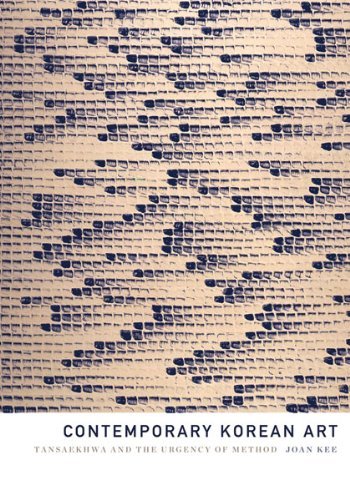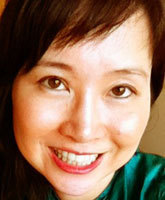New book examines Korean monochromatic painting
American art history professor offers fresh insight into Korean dansaekhwa as an alternative to European/American art
By Lee Woo-youngPublished : June 20, 2013 - 20:06
The first in-depth examination of Korean monochromatic painting is being published by an American art history professor in July, shedding new light on the Korean modern artistic movement that shaped what people view as today’s Korean abstract art.
“Contemporary Korean Art: Tansaekhwa and the Urgency of Method,” written by Joan Kee, an art history professor at the University of Michigan-Ann Arbor, offers a fresh interpretation of the movement’s emergence and meaning that sheds new light on the history of abstract and contemporary Asian art.
“Contemporary Korean Art: Tansaekhwa and the Urgency of Method,” written by Joan Kee, an art history professor at the University of Michigan-Ann Arbor, offers a fresh interpretation of the movement’s emergence and meaning that sheds new light on the history of abstract and contemporary Asian art.

“There is a renewed interest in non-Western abstraction as seen by the success of the Gutai, the postwar Japanese group who recently had a retrospective at the Guggenheim, and also of Lee U-fan ― himself an integral part of dansaekhwa. Korea is one of the very few Asian countries with a vigorous history of abstraction, the time is ripe for a reassessment of dansaekhwa’s place in a broader history of art,” said Kee in an email interview with The Korea Herald.
“What’s fascinating and significant about dansaekhwa is that it really shaped the field now celebrated in recent years as ‘contemporary Asian art,’” said Kee.

Based on research and interviews with leading Korean artists, Kee explores some of the overlooked dimensions of Korean dansaekhwa.
“By the early 1980s, dansaekhwa was promoted in both Japan and Europe as being particularly ‘Asian,’ a strategy which in some ways backfired ― more people started to pay attention to what was being said about the work rather than what the work actually looked like,” Kee explained.
Kee examines artists’ exploration to find their own style to break away from Japanese or Western art influences, which eventually shaped what people call today Korean dansaekhwa.
“Older artists like Kim Whan-ki wondered about the impact of the Japanese colonial era on the Korean art world. This debate was especially vigorous for ink painters who were extremely sensitive to charges of being influenced by the highly colorful, hybridized ink paintings known as Japanese painting, or nihonga,” Kee said.
According to the author the experimental painting that emerged in the early 1960s was both a refusal of the earlier colonial legacy as well as a response to Western modes of abstraction.
Artists such as Lee U-fan, Park Seo-bo, Kwon Young-woo, Yun Hyong-keun and Ha Chong-hyun developed distinctive styles based on the fundamental feature of using one color, with motifs from Korean natural landscapes.
Some of the major pieces of Korean dansaekhwa such as Ha Chong-hyun’s neutral color paintings, Kim Whan-ki’s blue-dot painting, and Lee U-fan’s calligraphy-like painting were on public display at the comprehensive survey of Korean dansaekhwa at the National Museum of Modern and Contemporary Art, Korea, earlier this year.
“Another important issue to note is that dansaekhwa deserves recognition not because it’s ‘Korean’ but because it forces viewers to think about (what) the so-called ‘mainstream’ European and American histories of art ignore or would rather forget,” Kee said.
A further overview of the book is available at the University of Minnesota Press at www.upress.umn.edu.
By Lee Woo-young (wylee@heraldcorp.com)




![[Herald Interview] 'Amid aging population, Korea to invite more young professionals from overseas'](http://res.heraldm.com/phpwas/restmb_idxmake.php?idx=644&simg=/content/image/2024/04/24/20240424050844_0.jpg&u=20240424200058)











![[KH Explains] Korean shipbuilding stocks rally: Real growth or bubble?](http://res.heraldm.com/phpwas/restmb_idxmake.php?idx=652&simg=/content/image/2024/04/25/20240425050656_0.jpg&u=)

